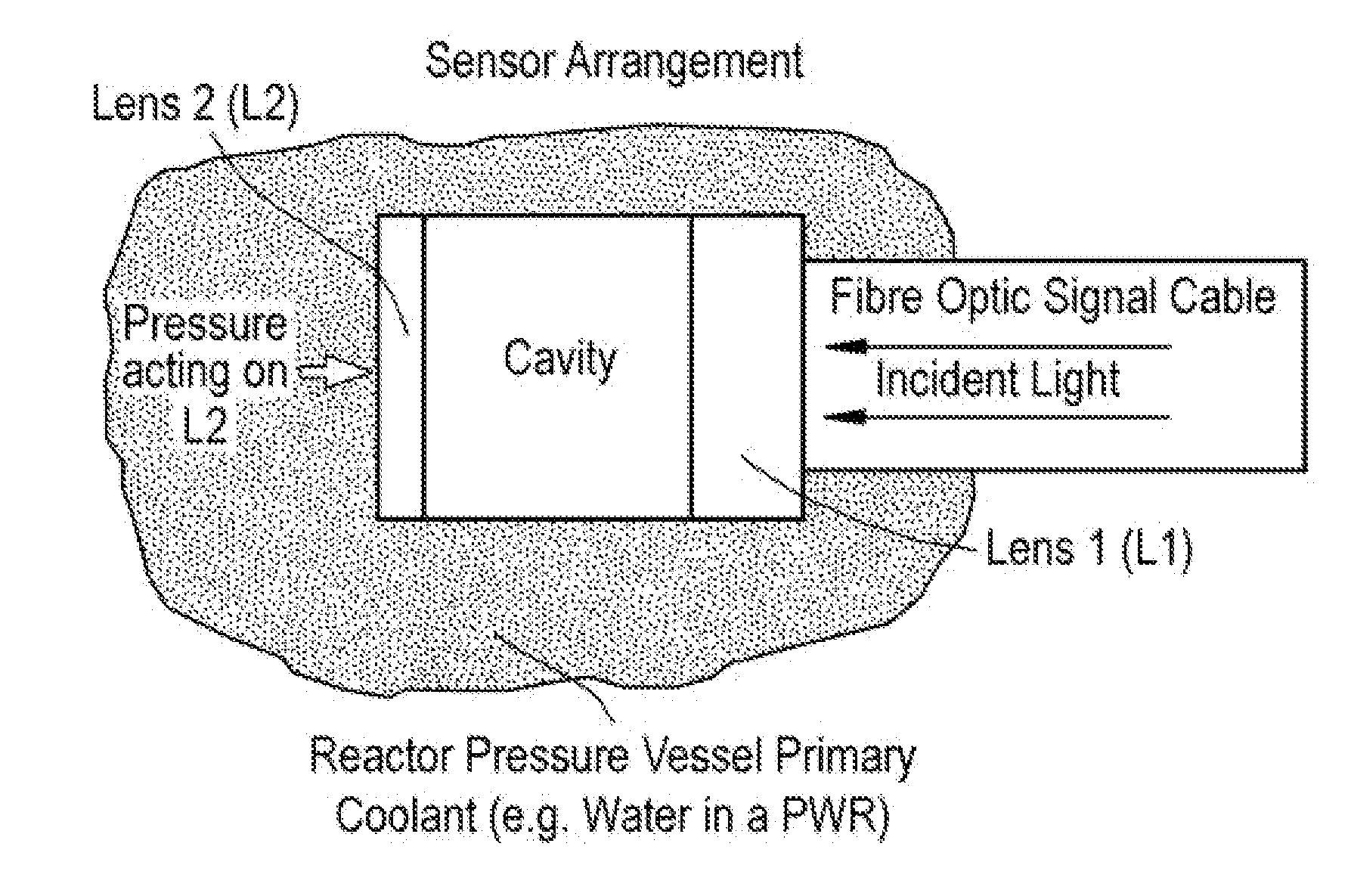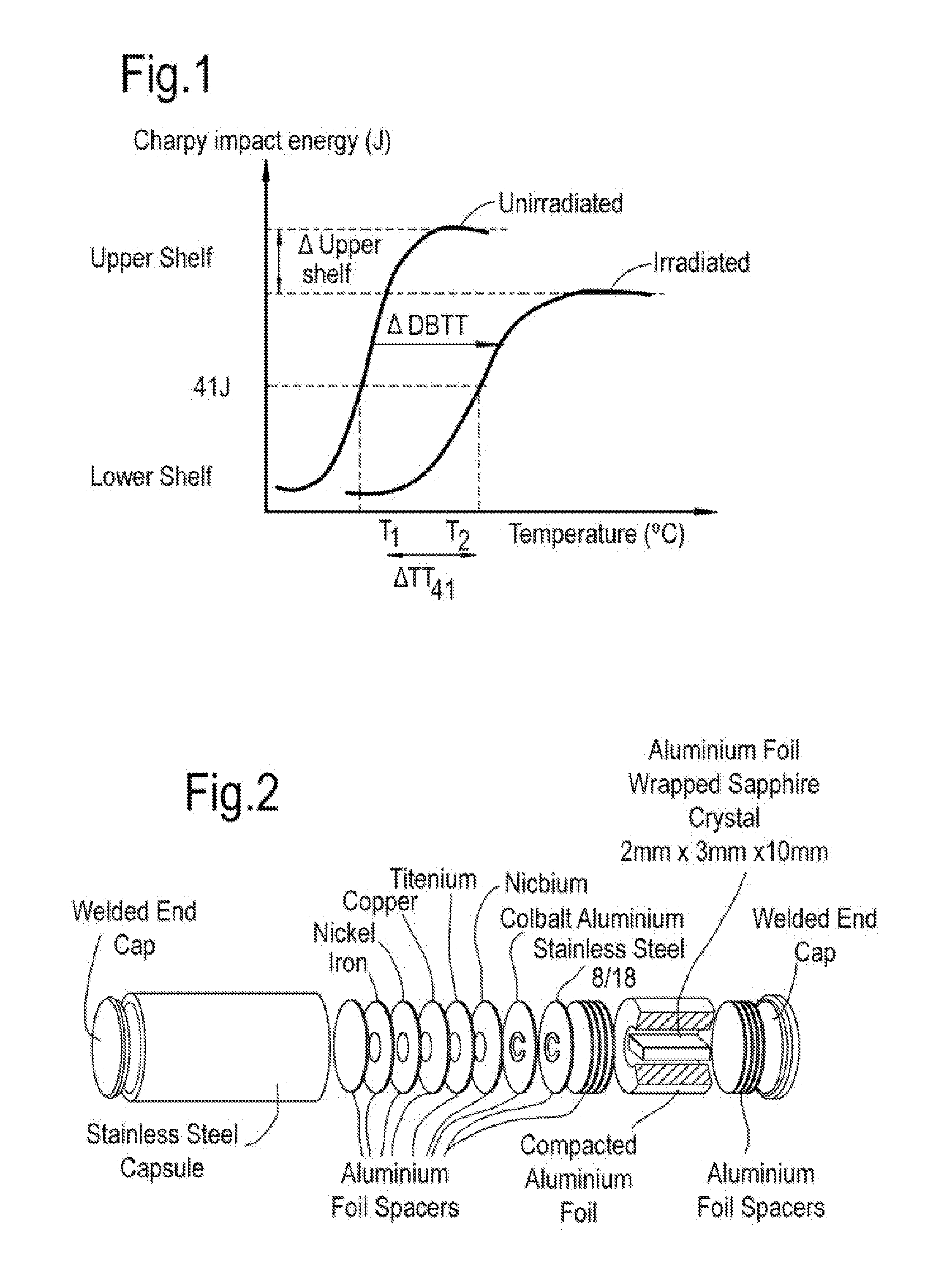Combined measurement of neutron fluence with temperature and/or pressure
a technology of temperature and/or pressure and combined measurement, applied in the direction of fluorescence/phosphorescence, instruments, greenhouse gas reduction, etc., can solve the problems of capsule sealing, analysis and interrogation, disadvantages of conventional dosimetery capsules, etc., to improve sensor sensitivity and reduce measurement uncertainties.
- Summary
- Abstract
- Description
- Claims
- Application Information
AI Technical Summary
Benefits of technology
Problems solved by technology
Method used
Image
Examples
Embodiment Construction
[0052]A Fabry-Pérot interferometer consists of two parallel flat semi-transparent mirrors separated by a fixed distance. Light that enters the cavity between the mirrors undergoes multiple reflections and the interference of the light emerging from the interferometer during each bounce causes a modulation in the transmitted and reflected beams. The transmission spectrum of the interferometer has a series of peaks spaced by the free spectral range. The width of each transmission peak decreases for higher finesse (reflectivity) mirrors, the finesse being defined as the ratio of the free spectral range to the full width half maximum of the transmission peaks. A Fabry-Pérot etalon is a similar device in which the reflections are between spaced, opposing mirrored surfaces of an optical body. Further information on Fabry-Pérot interferometers can be found in G. Hernandez (1986), Fabry-Pérot Interferometers: Cambridge Studies in Modern Optics 3, Cambridge University Press.
[0053]It is possi...
PUM
 Login to View More
Login to View More Abstract
Description
Claims
Application Information
 Login to View More
Login to View More - R&D
- Intellectual Property
- Life Sciences
- Materials
- Tech Scout
- Unparalleled Data Quality
- Higher Quality Content
- 60% Fewer Hallucinations
Browse by: Latest US Patents, China's latest patents, Technical Efficacy Thesaurus, Application Domain, Technology Topic, Popular Technical Reports.
© 2025 PatSnap. All rights reserved.Legal|Privacy policy|Modern Slavery Act Transparency Statement|Sitemap|About US| Contact US: help@patsnap.com



